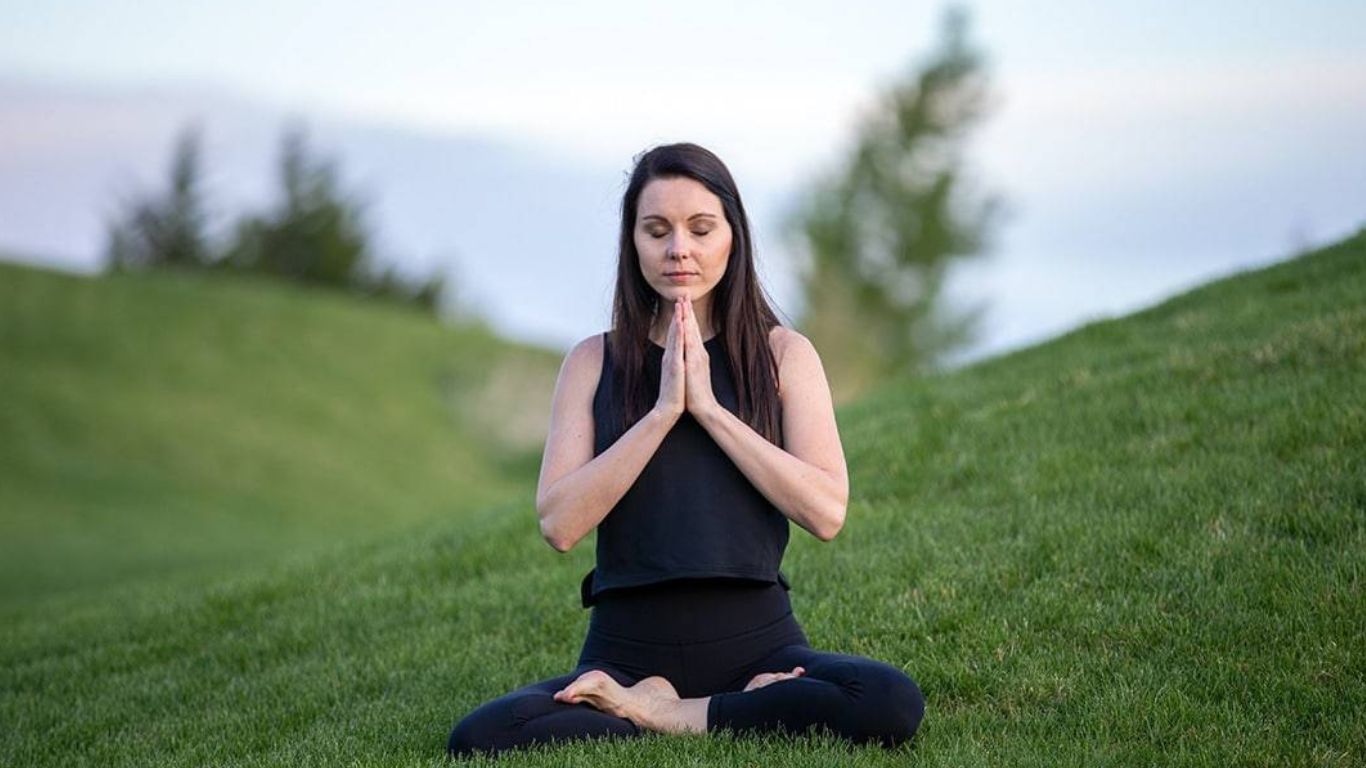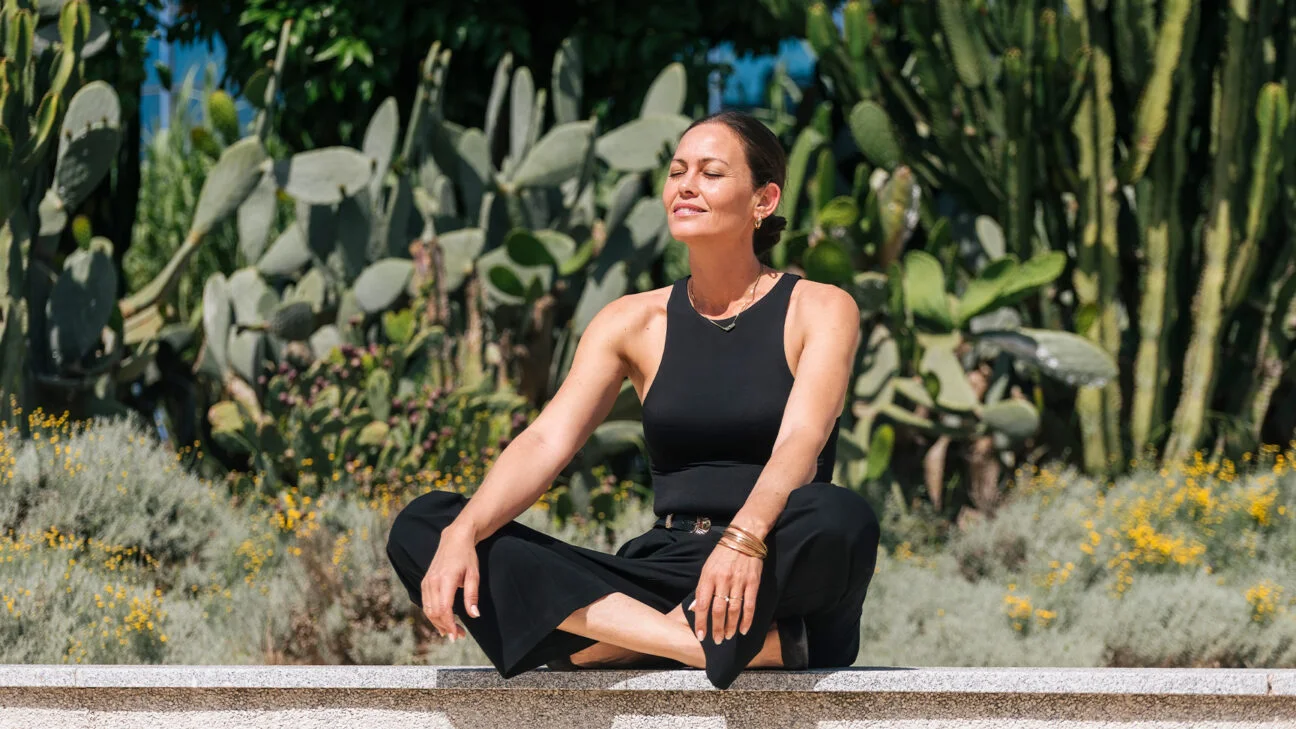Teaching yourself Transcendental Meditation (TM) can be a rewarding experience. Although it’s usually taught by a trained teacher, you can learn the basics on your own. In this post, we will guide you through how to get started with TM, using simple steps and resources. We’ll explain what TM is, how to use a mantra for meditation, and tips for making meditation a regular part of your day. By the end, you’ll have a good foundation to practice TM on your own and enjoy its benefits.

Contents
- 1 How To Teach Yourself Transcendental Meditation?
- 2 The Benefits Of Transcendental Meditation
- 3 What Is The Difference Between Transcendental Meditation And Other Forms Of Meditation?
- 4 Frequently Asked Questions
- 4.1 How long does it take to learn Transcendental Meditation (TM)?
- 4.2 How should I breathe during Transcendental Meditation?
- 4.3 Are there any downsides to practicing Transcendental Meditation?
- 4.4 How often should I repeat my mantra during Transcendental Meditation?
- 4.5 How can I practice Transcendental Meditation at home?
How To Teach Yourself Transcendental Meditation?
Transcendental Meditation, a simple and effortless practice, takes you toward higher self-awareness by making you focus on a mantra. Here’s how you can begin your journey into Transcendental Meditation:
1. Understand the Basics:
Transcendental Meditation involves silently repeating a mantra in a specific way to settle the mind into a state of profound relaxation and inner peace. The mantra, usually a word or sound, helps distract the mind from daily thoughts and activities.
2. Choose Your Mantra:
In formal TM practice, a certified instructor would provide a specific mantra tailored to you. For self-learning, choose a soothing word or sound that has no specific meaning to you. This could be a word like “peace,” “love,” or any other simple sound you find calming.
3. Find a Comfortable Place:
Select a quiet and comfortable place where you won’t be disturbed. Sit in a comfortable chair or on the floor with your back supported and feet on the ground.

4. Settle Into the Practice:
Sit with your eyes closed and take a few deep breaths to relax. Begin to silently repeat your chosen mantra in your mind. Let the mantra flow gently without forcing it. If you find your attention wandering, gently redirect it back to your mantra.
5. Time Your Practice:
Start with two sessions per day, about 20 minutes each, one in the morning and one in the evening. Use a timer to keep track of time without checking it constantly.
6. Be Consistent:
Consistency is key in meditation. Try to practice at the same times each day to establish a routine that becomes a natural part of your daily rhythm.
7. Learn and Adapt:
Read books or watch videos about Transcendental Meditation to deepen your understanding and refine your practice. Over time, adjust your practice based on what feels right for you.
8. Be Patient and Open:
Meditation is a skill that develops and deepens over time. Be patient with yourself and remain open to the experience. Some days might feel easier than others, and that’s perfectly normal.
The Benefits Of Transcendental Meditation
Transcendental Meditation (TM) is a specific style of meditation that has been studied for its potential health benefits. Here’s a breakdown of some of the key advantages:

1. Stress Reduction and Relaxation:
TM is widely recognized for its ability to reduce stress and promote relaxation. The practice involves focusing on a mantra, a repeated word or sound, which helps quiet the mind and reduce stress hormones like cortisol.
2. Improved Mental Wellbeing:
Studies suggest that TM may help alleviate symptoms of anxiety and depression. The practice can promote feelings of calmness and inner peace, potentially reducing negative thoughts and rumination.
3. Enhanced Focus and Concentration:
Regular TM practice may improve your ability to focus and concentrate. The technique can train the mind to be less reactive to distractions, leading to better focus throughout the day.
4. Physical Health Benefits:
Some research suggests that TM may positively impact physical health by potentially lowering blood pressure and improving sleep quality. The relaxation response triggered by meditation can contribute to these benefits.
5. Overall Well-being:
Proponents of TM believe it can enhance overall well-being by promoting a sense of inner peace, self-awareness, and emotional resilience. Regular practice may lead to a more positive outlook and improved emotional regulation.
What Is The Difference Between Transcendental Meditation And Other Forms Of Meditation?
While both Transcendental Meditation (TM) and other forms of meditation aim to achieve a state of calmness and focus, they differ in their techniques and approaches. Here’s a breakdown of the key distinctions:

1. Focus and Effort::
- TM: In TM, the focus is on effortlessly repeating a mantra, a specific sound or word assigned by a certified teacher. The idea is to transcend thought and enter a state of deep relaxation.
- Other Forms: Mindfulness meditation, for example, involves actively focusing your attention on the present moment, such as your breath or bodily sensations. You may need to gently redirect your attention if your mind wanders.
2. Structure and Instruction:
- TM: Learning TM requires attending a paid course with a certified teacher who provides a specific mantra and instruction on its practice.
- Other Forms: Many meditation techniques can be learned from books, apps, or online resources. There are numerous styles, each with varying instructions and focuses.
3. Goals and Outcomes:
- TM: Proponents of TM believe it can lead to a state of “transcendental consciousness,” a unique state beyond thought or wakefulness.
- Other Forms: Mindfulness meditation aims to cultivate present-moment awareness and acceptance of thoughts and feelings without judgment.
Here’s a table summarizing the key differences:
| Feature | Transcendental Meditation (TM) | Other Forms of Meditation (e.g., Mindfulness) |
|---|---|---|
| Focus | Effortlessly repeating a mantra | Actively focusing on the present moment (breath, sensations, etc.) |
| Structure | Requires a certified teacher and specific mantra | Can be learned from various resources, various techniques |
| Goal | “Transcendental consciousness” | Present-moment awareness, non-judgmental observation of thoughts and feelings |
Frequently Asked Questions
How long does it take to learn Transcendental Meditation (TM)?
Learning TM starts with the TM Course, which is taught by a Certified TM teacher. The course lasts four consecutive days, with each day lasting about two hours. This provides you with the ability to master the TM technique and build a strong foundation for a lifelong meditation practice.
How should I breathe during Transcendental Meditation?
Transcendental Meditation is a mental practice that does not involve any specific breath control procedures. During TM, breath suspension episodes may occur naturally and spontaneously.
Are there any downsides to practicing Transcendental Meditation?
Certain reports suggest that meditation could cause or worsen symptoms for people with specific psychiatric conditions. If you have a mental health condition, it’s important to consult your doctor or a mental health professional before starting TM.
How often should I repeat my mantra during Transcendental Meditation?
In the practice of Transcendental Meditation, a Sanskrit mantra is silently repeated for brief periods regularly. Usually, this is done twice a day.
How can I practice Transcendental Meditation at home?
To practice Transcendental Meditation at home, sit comfortably in a chair or on the floor with your hands on your lap. Close your eyes for a minute, take a few deep breaths, and relax your body. Remain in this state for 15 to 20 minutes, silently repeating a mantra in your mind.

Hello, I’m Ravindra. Over the years, I’ve immersed myself deeply into the world of fitness and health, transforming both my body and mind. Writing has allowed me to share my journey, insights, and expertise with those just starting out and seasoned fitness enthusiasts alike. Beyond just routines and diets, I believe in inspiring others to adopt a holistic approach to well-being.
